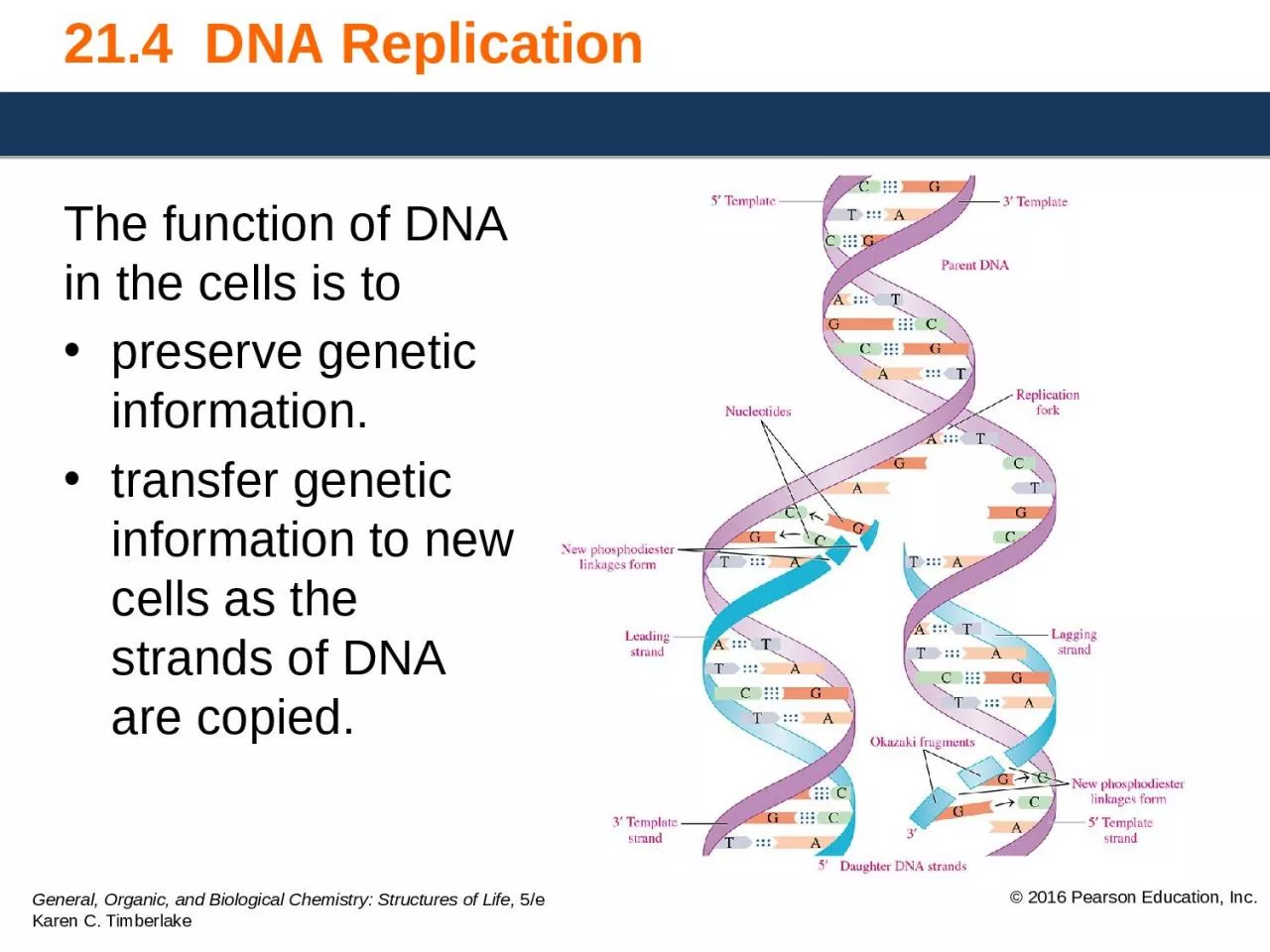

preserve genetic information transfer genetic information to new cells as the strands of DNA are copied DNA Replication In DNA replication the strands in the original or parent DNA molecule separate to allow the synthesis of complementary DNA strands ID: 1045567
Download Presentation The PPT/PDF document "21.4 DNA Replication The function of DN..." is the property of its rightful owner. Permission is granted to download and print the materials on this web site for personal, non-commercial use only, and to display it on your personal computer provided you do not modify the materials and that you retain all copyright notices contained in the materials. By downloading content from our website, you accept the terms of this agreement.
1. 21.4 DNA ReplicationThe function of DNA in the cells is topreserve genetic information.transfer genetic information to new cells as the strands of DNA are copied.
2. DNA ReplicationIn DNA replication,the strands in the original or parent DNA molecule separate to allow the synthesis of complementary DNA strands.the process begins with the unwinding of the double helix by breaking the hydrogen bonds between the complementary bases.the resulting single strands act as templates for the synthesis of new complementary strands of DNA.
3. Hydrogen Bonding, Base PairsWithin the nucleus, nucleoside triphosphates (dATP, dTTP, dGTP, and dCTP) on the template strand form hydrogen bonds with their complementary basesphosphodiester linkages are formed between the nucleotides as the hydrogen bonds form between the base pairs: T forms hydrogen bonds with A. G forms hydrogen bonds with C.
4. Daughter DNA StrandsIn each new DNA,one strand of the double helix is from the parent DNA.one is a newly synthesized DNA strand.two new daughter DNA strands that are exact copies of the parent DNA are formed.complementary base pairing ensures the correct placement of bases in the daughter DNA strands.
5. Daughter DNA Strands
6. Direction of ReplicationDuring DNA replication, helicase unwinds the parent DNA at several sections.DNA polymerase catalyzes the replication process at each of the open DNA sections called replication forks.the polymerase moves in the 3′–5′direction, catalyzing the formation of new phosphodiester linkages.the lagging strand (growing in the 5′–3′ direction) is synthesized in short sections called Okazaki fragments.DNA ligase joins the Okazaki fragments.
7. Direction of Replication
8. Enzymes, Proteins in Replication
9. Study CheckMatch the following to their definitions:1) helicase 2) DNA polymerase3) replication fork 4) Okazaki fragments A. short segments formed on the lagging strand B. the starting point for synthesis in unwound DNA sections C. the enzyme that unwinds the DNA double helix D. the enzyme that catalyzes the formation of phosphodiester bonds of complementary bases
10. SolutionMatch the following to their definitions:1) helicase 2) DNA polymerase3) replication fork 4) Okazaki fragments 4 A. short segments formed on the lagging strand 3 B. the starting point for synthesis in unwound DNA sections 1 C. the enzyme that unwinds the DNA double helix 2 D. the enzyme that catalyzes the formation of phosphodiester bonds of complementary bases